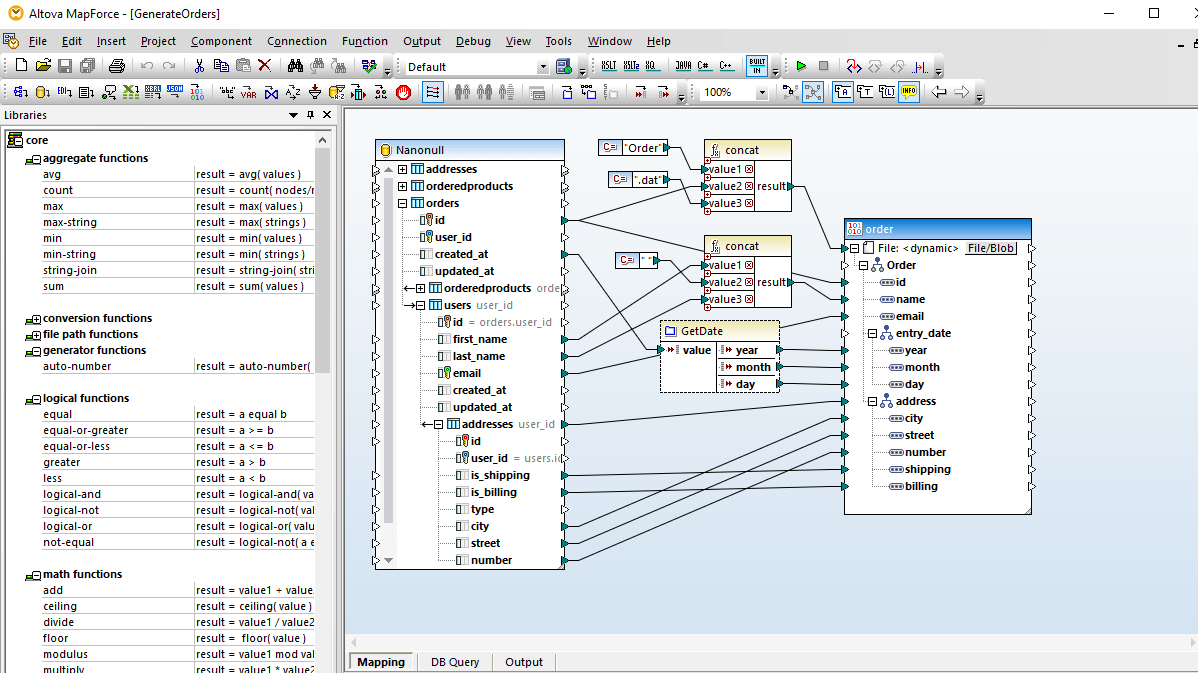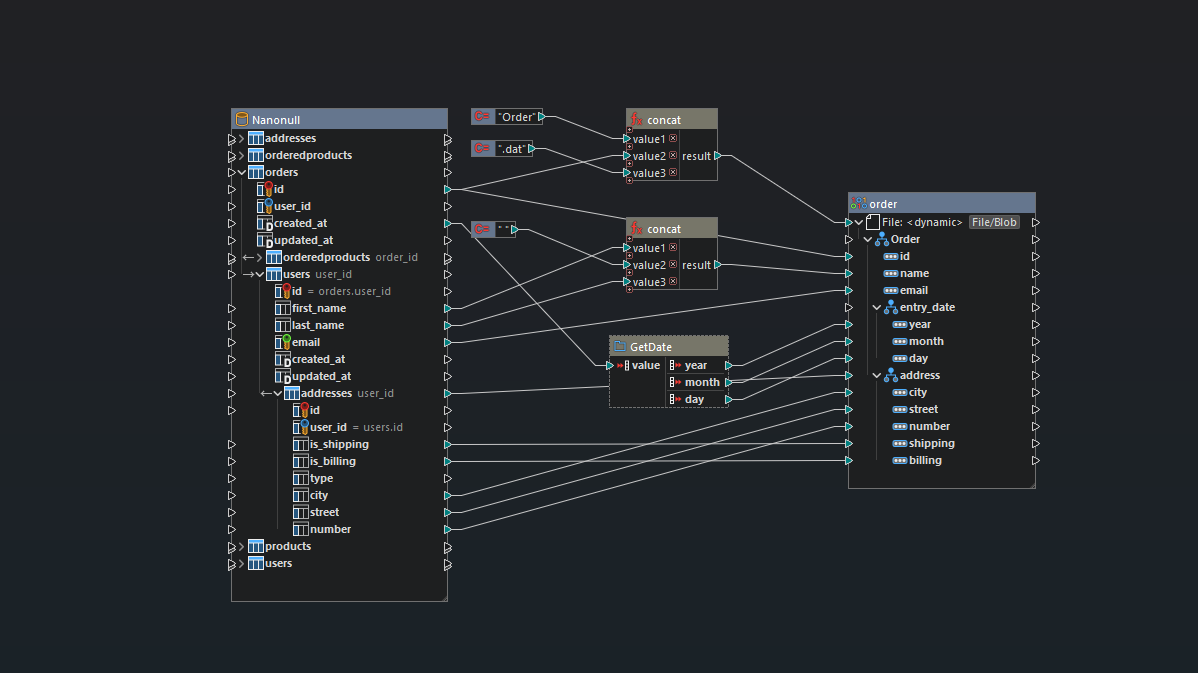
Google Protocol Buffers (protobuf) is a language-agnostic, efficient, and extensible mechanism for serializing structured data for communication and data interchange between different systems and programming languages. By defining a schema for data structures using a simple and readable language, protobuf facilitates the generation of code for encoding and decoding data, resulting in compact and fast serialization. It offers benefits such as platform independence, backward and forward compatibility, and support for evolving data schemas, making it an ideal choice for applications requiring high-performance data serialization and communication.
While protobuf offers efficient and compact serialization, there are various scenarios where conversion may still be necessary to facilitate interoperability, integration, data transformation, exchange, storage, analysis, and reporting.
MapForce supports protobuf as the source or target of any data integration project, allowing users to convert Protocol Buffers and JSON, XML, legacy text files, Excel, relational databases, and other formats. Common operations include:
- Protobuf to/from JSON
- Protobuf to/from XML
- Protobuf to/from CSV or legacy text files
- SQL to protobuf
- Using protobuf in REST/SOAP Web services calls
- Using protobuf in Shopify/GraphQL calls
To make data exchange possible, binary files in Protocol Buffers format are accompanied by .proto files, which define the structure of the encoded binary data (similar to how an XSD describes the structure of an XML instance document). MapForce represents the .proto structure in a visual component, allowing you to drag and drop to map binary instances encoded in protobuf to other formats.
A rich library of data transformation functions and intuitive visual function builder make it easy to transform data before writing it to the target(s).




